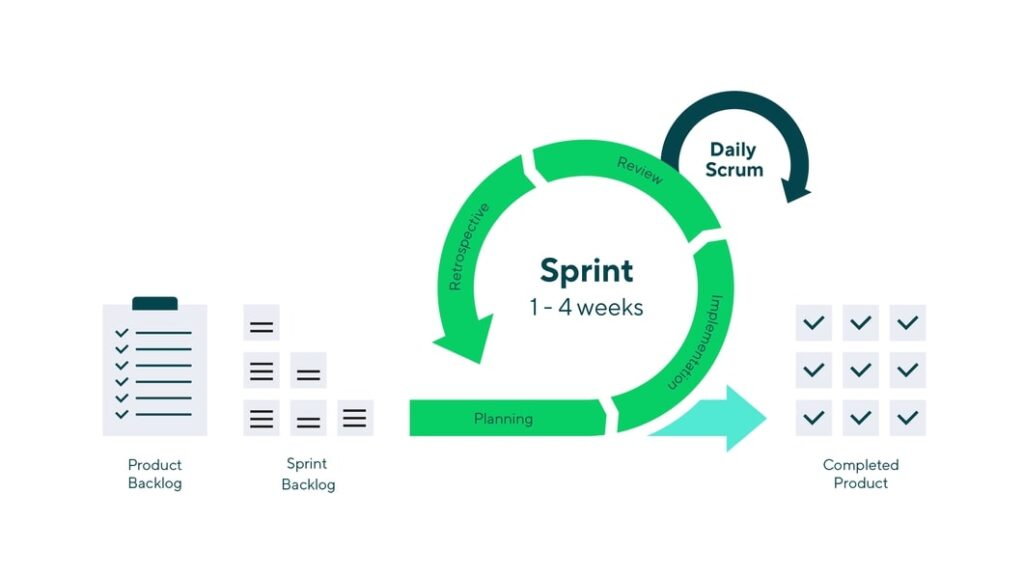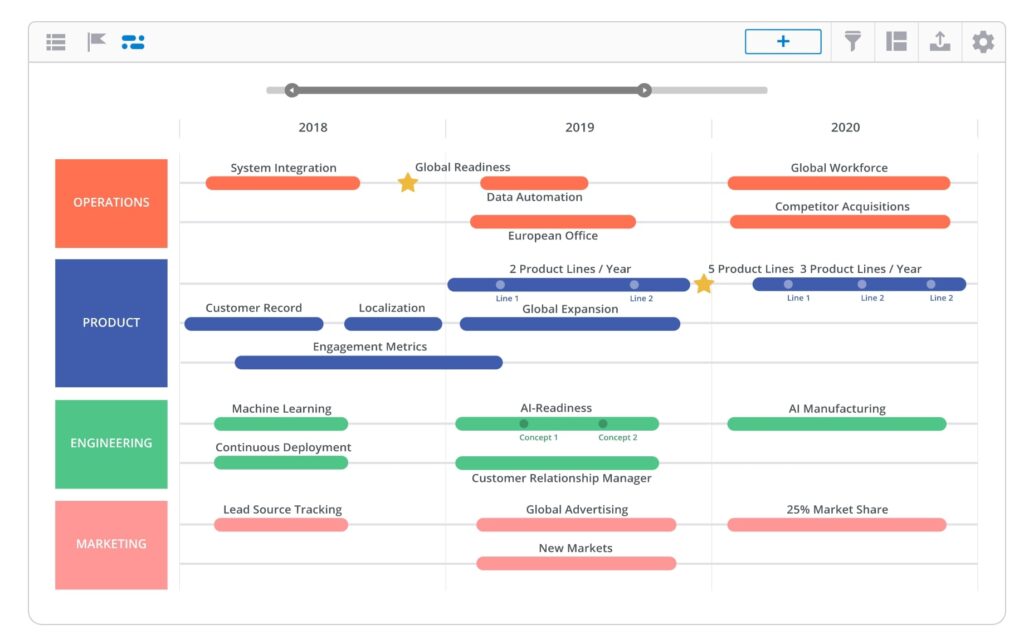As a project management tool, long-term agile planning prioritizes vision thinking and precise execution.
On the one hand, the planning process factors in the challenges and difficulties that pose a threat to the success of a project, prompting a rethink or adoption of a new approach. On the other hand, agile planning circumvents these impending threats such as losses in productivity or lack of immediate results on long-term projects.
A good project manager prepares for these contingencies through regular discovery, responding to change, and gathering feedback. This flexible approach leaves room for prioritization and customization of projects that meet business goals.
But what makes this at all achievable?
In this article, we discuss ways that teams conduct long-term agile planning.
To learn more via video, watch below. Otherwise, skip ahead.
8 Tips for Long-Term Agile Planning
Let’s break each one down step-by-step.
1. Focus on the Big Picture
Establish a clear vision and strategy that centers on the use of specific themes or focal points for distribution throughout the entire organizational structure.
Define the goals toward which the company must work over the next quarter or year to determine the allocation of time and resources. Prioritizing these themes is key to big-picture planning, measuring output, and overall productivity.
2. Identify the High Yield Outcomes
After setting the strategic goals, long-term agile planning demands that you know which outcomes or user behaviors are most effective toward achieving them. Subsequently, development teams use impact metrics to ensure cohesion between the company’s priorities, such as revenue, and the priorities of stakeholders.
Mapping out impact metrics involves concurrent input from both parties (development teams and stakeholders) and focuses on methods of making changes to the strategic goals. This includes denoting potential measures of success and their respective driving forces.
This practice is beneficial as it not only increases the output of high-level ideas but also allows stakeholders to gain insight into a range of available outcomes.
3. Break Down the Workload
An increase in the number of high-level initiatives results in a larger scope of work.

Credits: Wrike
Therefore, dividing the tasks into smaller, more manageable pieces, such as sprints or epics, gives an unobstructed view of all the requirements for completing the initiatives.
4. Estimate
Once you’ve divided the workload, the next step is to estimate how much time the project takes.
Take time to sit and come up with a timeline for the delivery of key milestones during product development.
Liaise with the team members who are responsible for the completion of certain tasks. Find out from them how long they estimate it takes to finish tasks and make allocations for any setbacks that crop up along the way.
5. Create Smart Releases
A primary feature of agile development is the use of development teams that, in general, complete their software deliverables at the end of each sprint in the form of a release or version. The key to long-term planning and road mapping is defining rough release points which permit the estimation of release dates per quarter.
Group the items with similar features and place them in the roadmap. Keep in mind whether these items are coherent and provide value to customers as a whole. Also, be cognizant that it is the scope of work, rather than strict deadlines, that determines smart releases.
6. Initiate the Roadmap
Establishing estimates for product releases by way of proper planning means that it is now possible to proceed with creating a realistic roadmap. Agile planning dictates that there are three variables to consider: scope, duration, and resources. Use these factors to make data-driven decisions while keeping stakeholders up-to-date with the team’s progress.

Credits: Roadmunk
Remember that a long-term agile roadmap includes impact metrics, user behaviors or outcomes, themes, quarterly initiatives and objectives and key results (OKRs), which are all contingent on outcomes.
7. Share the Roadmap
Now that a realistic roadmap exists, it is time to solicit feedback and validation from team members. The entire team determines the features and tasks for the next quarter. They then break down these epics into smaller tasks known as stories.
Although these represent the current roadmap, they are still estimations. Therefore, choosing them according to how they deliver value to the business and help to achieve goals is vital. To do this, team members collaborate to prioritize features and map out actual user data. It is advisable to involve key stakeholders in this process, in the event that subsequent steps require their approval.
8. Keep Improving
The roadmap is, in essence, a framework and as such, is subject to change. Making gradual improvements is what guarantees high-yielding outcomes. Use the current roadmap to optimize future roadmaps by getting user feedback, conducting user tests, and improving at regular intervals.
Consider reviewing the plan once per quarter to allow you to adjust the OKRs if needed.
Long-Term Agile Planning: Key Takeaways
At the helm of the agile planning process is a big picture or vision that sets the pace for prioritizing initiatives that are central to achieving goals. A measure of success with this process is the use of multiple teams that work toward specific themes within a framework that favors the estimation of timelines, cost, and user feedback.
In software development, being flexible is a vital part of the process. This flexibility permits team members to make constant improvements to the project. A change in scope converts into anticipating the respective changes.
Focusing on outcomes by planning ahead and utilizing roadmaps that keep stakeholders up to speed are both pivotal to defining a long-term agile plan.
Be sure to maintain a balance between the allocation of time toward specific tasks with immediate and visible results.
